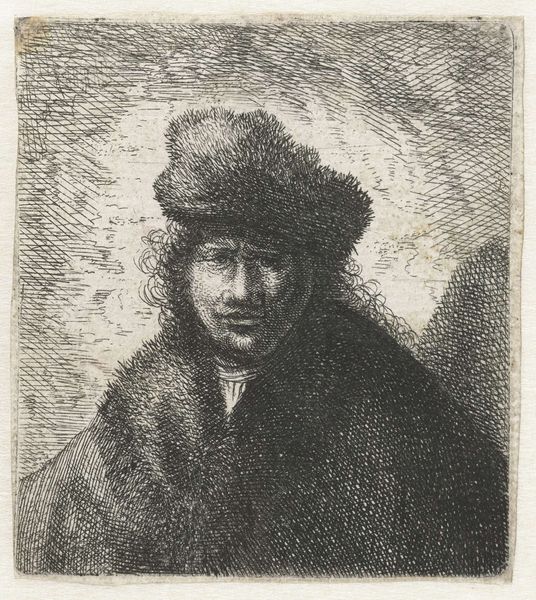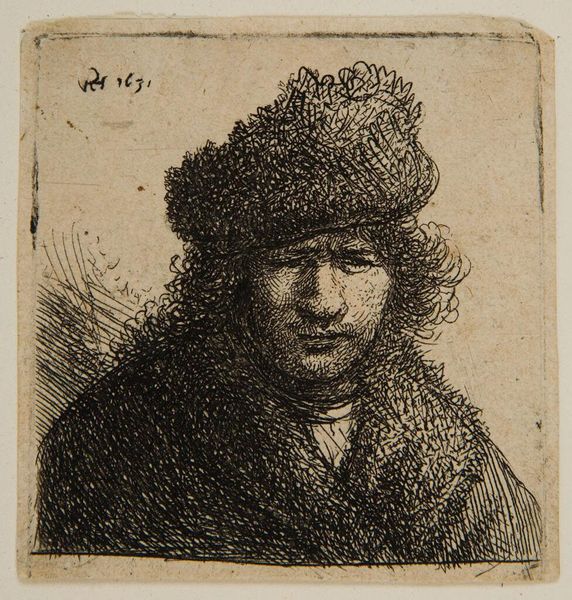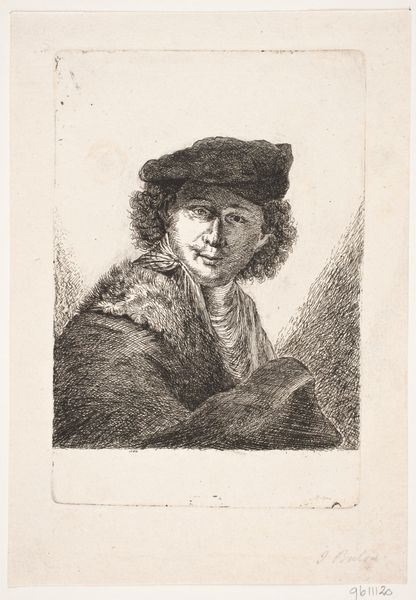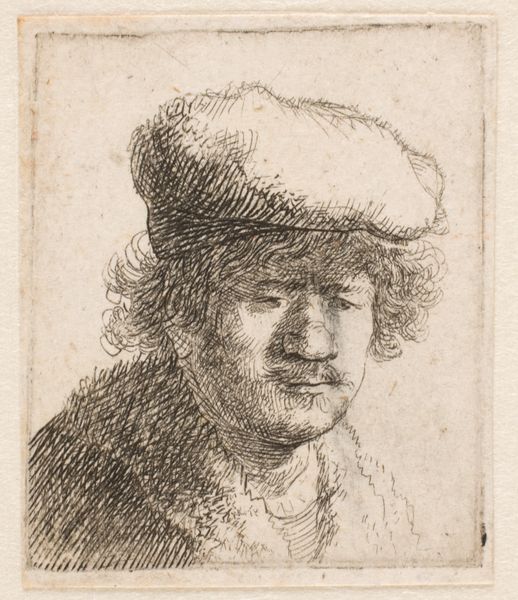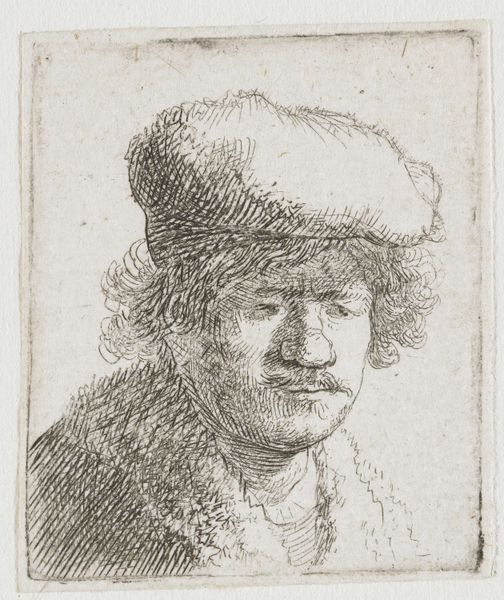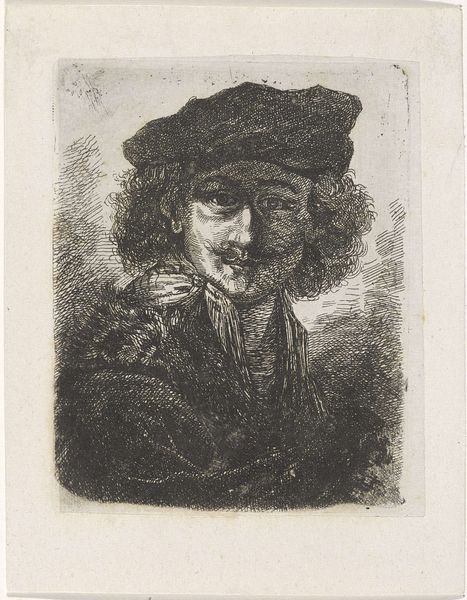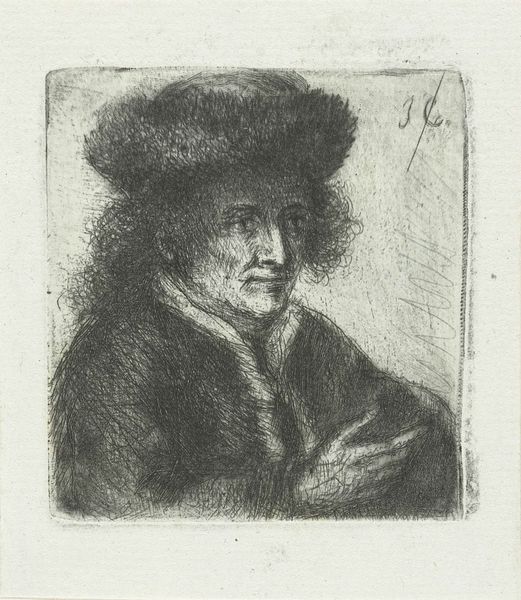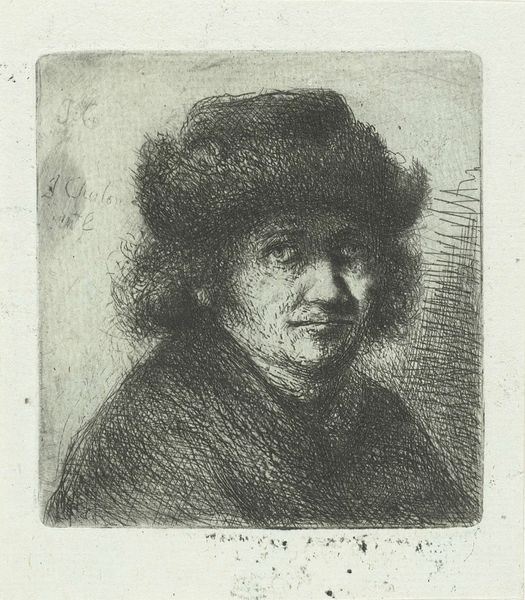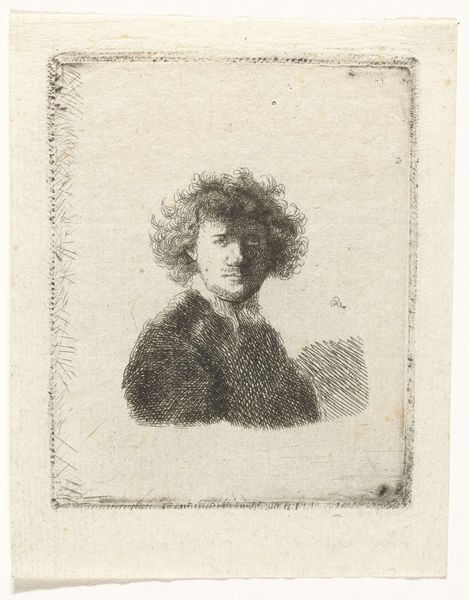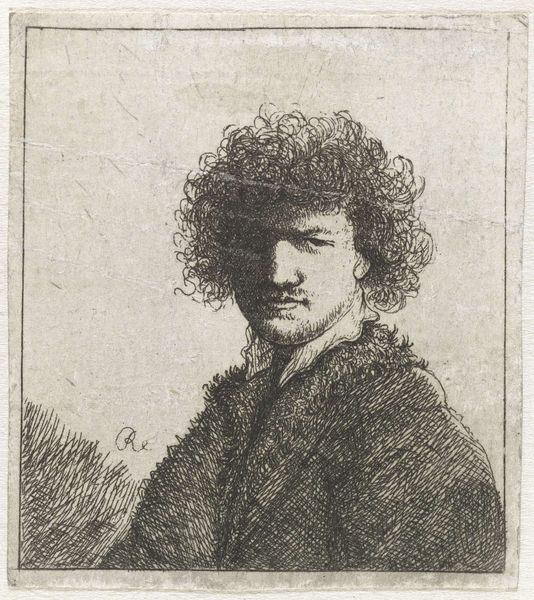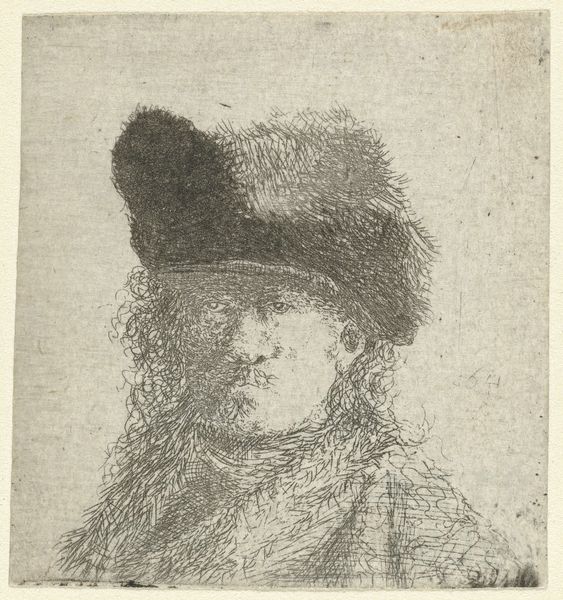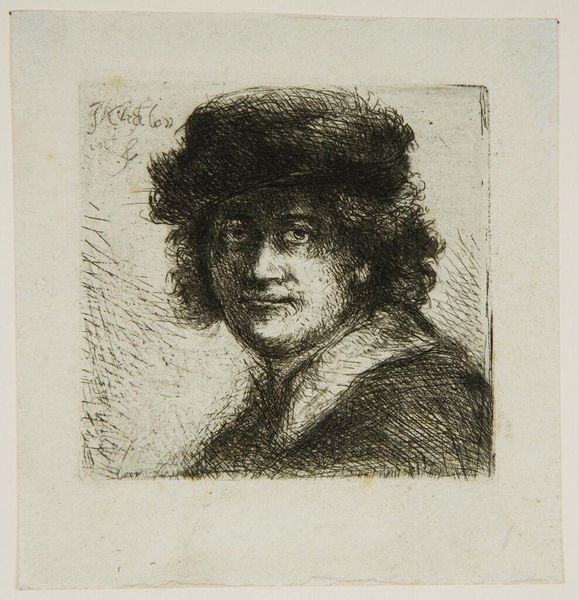
print, etching, intaglio, engraving
#
portrait
#
self-portrait
#
baroque
#
dutch-golden-age
# print
#
etching
#
intaglio
#
engraving
Dimensions: height 64 mm, width 57 mm
Copyright: Rijks Museum: Open Domain
Curator: The density of lines here… it's incredibly striking. You can almost feel the texture of the fur cap. Editor: It’s melancholic. A bit brooding, even. All that shadow seems to weigh him down. Let’s talk about Rembrandt’s "Self-portrait in a slant fur cap: bust," dating from around 1631. It's currently held at the Rijksmuseum. What captures me most is how it pulls you into an almost unsettling intimacy with the artist himself. Curator: Well, unsettling intimacy sounds about right considering the technique. It’s an etching, engraving, and intaglio print – a labour-intensive process to be sure, one that speaks to the burgeoning print market in 17th-century Netherlands, wouldn’t you say? A means to circulate images, like his, more widely. Editor: Exactly! The accessibility of prints allowed Rembrandt to cultivate a very particular image, craft a brand almost, at a time when the art market was becoming increasingly public. These self-portraits served as advertisements, demonstrating his mastery and attracting patrons. This specific one is really interesting, the way he chose to present himself tells us a lot. Curator: I agree! And focusing on the physical… look closely at the varied weights of lines, all these hatched strokes. He's controlling the flow of ink. That determines what appears light, what recedes, what comes forward. Notice how this all directs our gaze so intently toward his face. A lot of labor goes into achieving that kind of subtle illusion of depth! Editor: Yes, the meticulous control. But it's not just technical skill; it’s deliberate presentation. Fur wasn't cheap. Dressing himself in a luxurious fur hat isn’t just about warding off the cold; it suggests wealth and status, whether real or aspirational, and is calculated for the observer, for a potential buyer. Curator: Which begs the question: where *did* the fur originate? Who labored to trap the animal, tan the hide, craft the cap? Where was this portrait first displayed, who purchased it, and what was its value then versus now? These considerations expose the economics shaping Rembrandt's artistic practice. Editor: Absolutely, the history is layered! Considering the Dutch Golden Age's emphasis on mercantilism, we see art playing a vital role in projecting Dutch prosperity and identity. It's all interwoven - the artist's self-fashioning, market dynamics, and socio-political aspirations. Curator: The interplay between these materials and markets… truly illuminating. Thank you. Editor: Likewise. A great reminder that what appears individual is always enmeshed in broader historical currents.
Comments
No comments
Be the first to comment and join the conversation on the ultimate creative platform.
